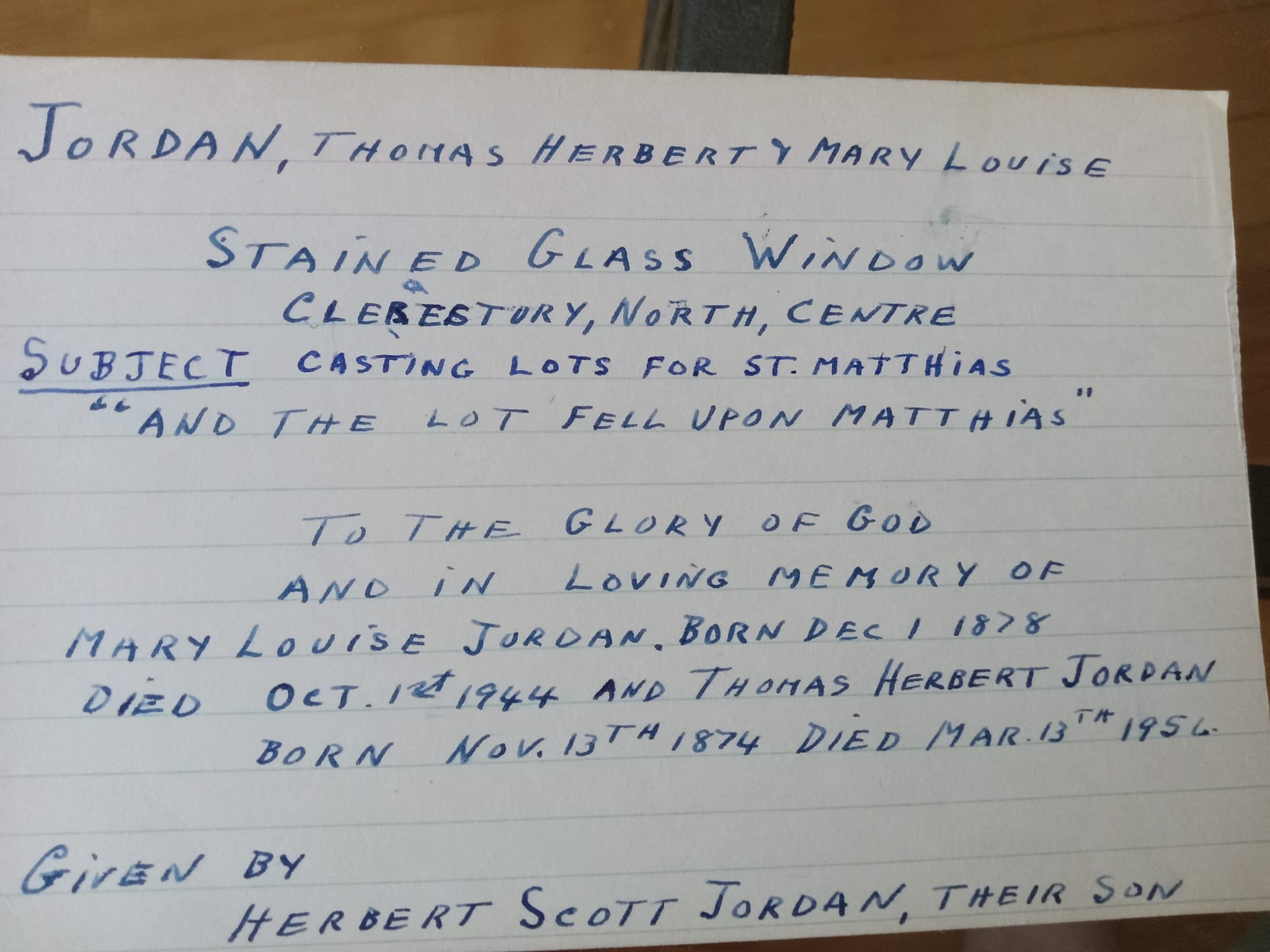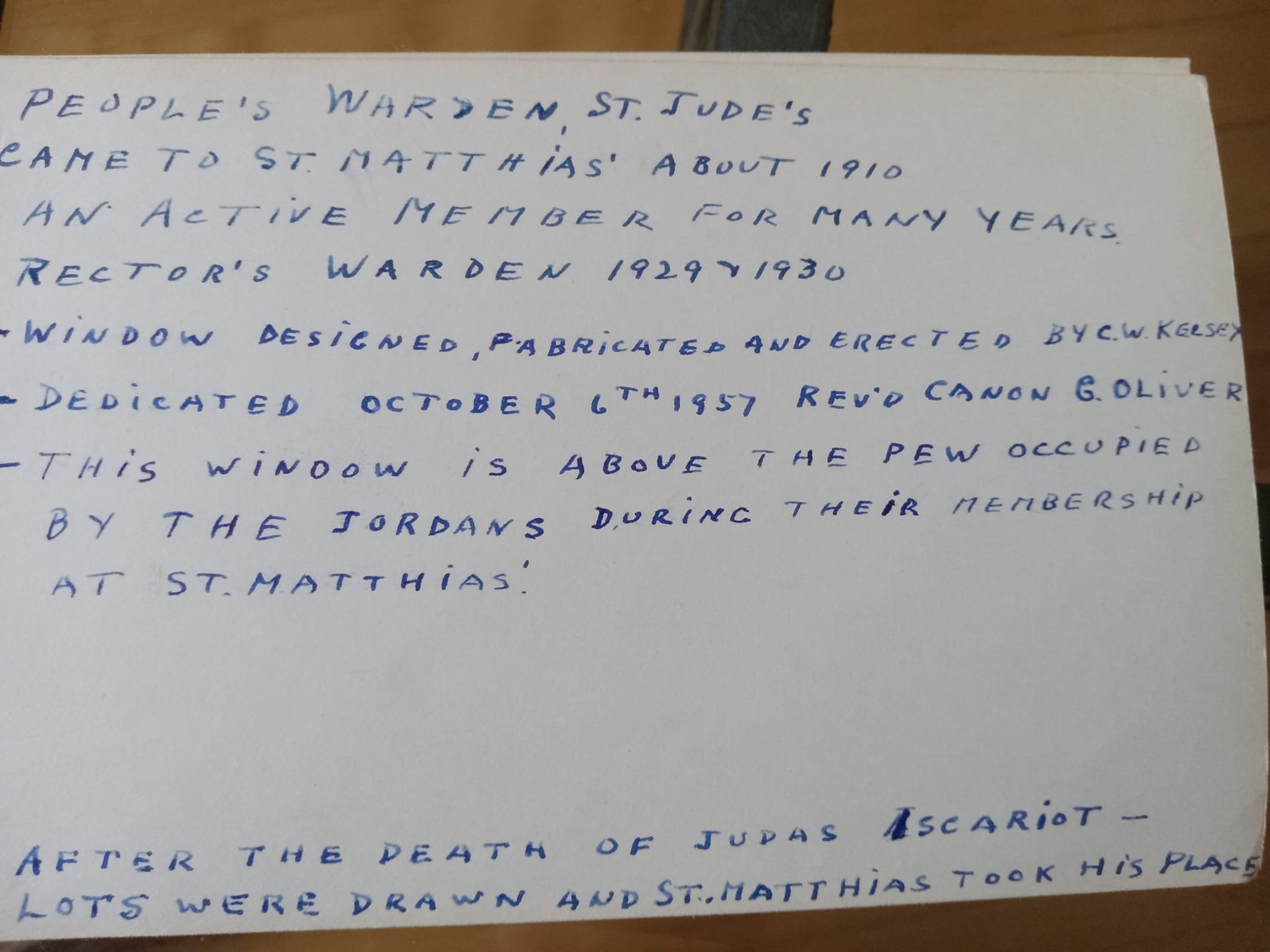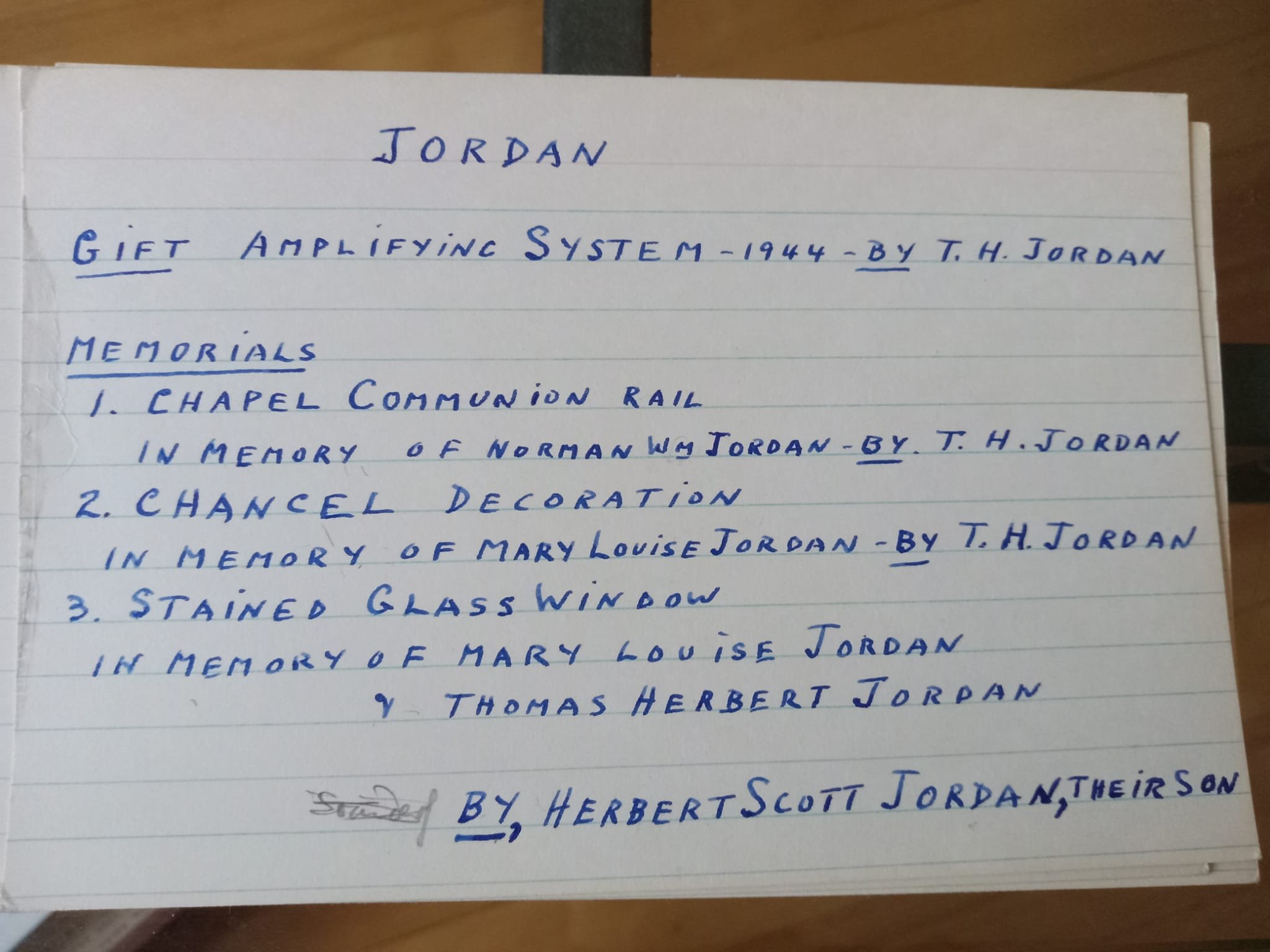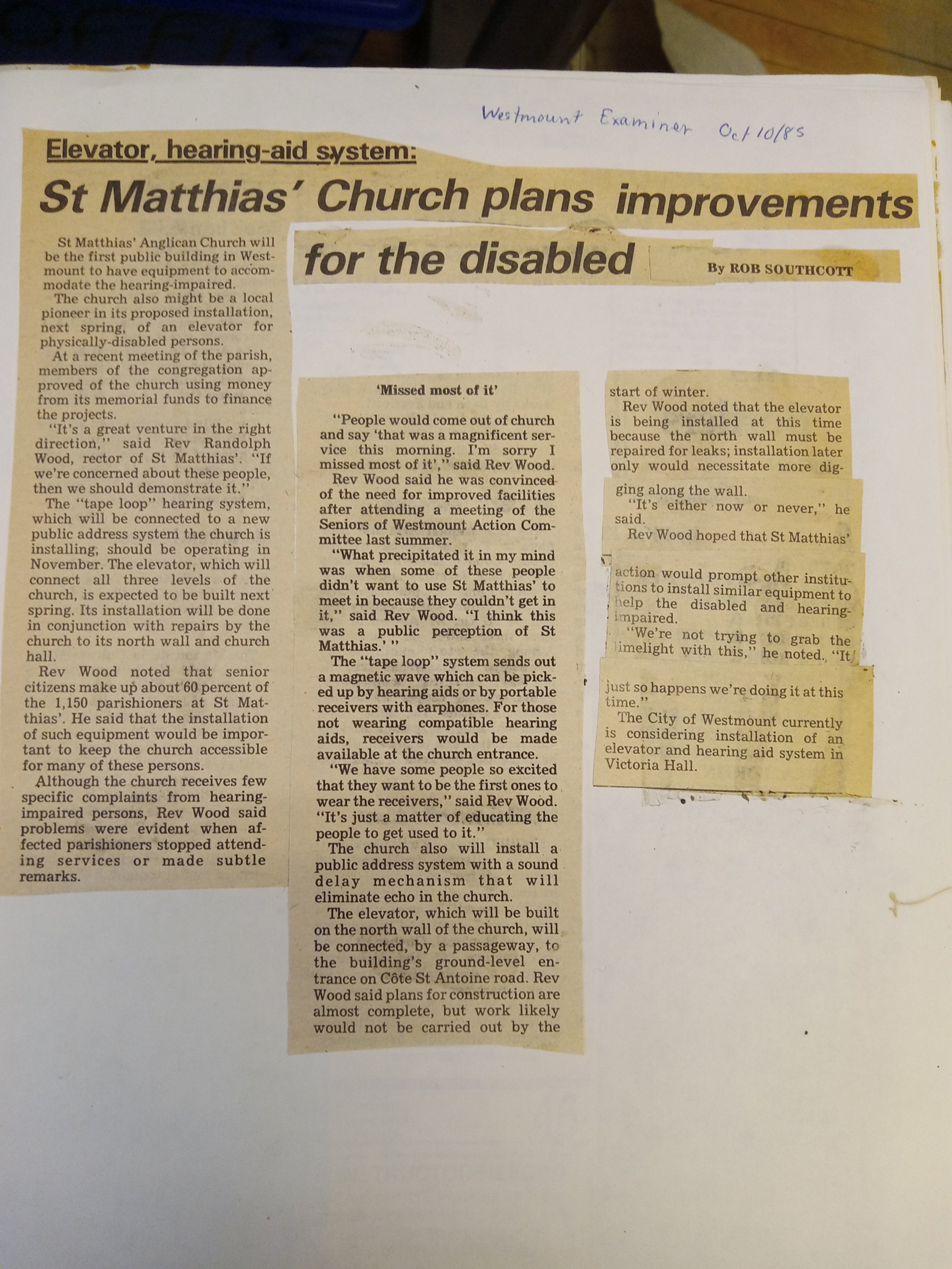November 26th: Accessibility & Amplification
St. Matthias’ was officially founded as a mission of St. George’s, Place du Canada, in 1873, which means our community is 150 this year! For the next 12 months, we’ll be diving into the archives to shine the spotlight on particularly interesting parts of our history.
Over the course of the past three years, St. Matthias’ has been upgrading its audiovisual equipment, which now includes three cameras, a laptop, and a flat-screen TV. These new additions to the parish’s electronics complement are part of our commitment to making sure that all Matthians, regardless of their mobility, location, or the strength of their immune system, can participate in worship. The COVID-19 pandemic pushed us to get this particular setup started, but we probably would have ended up there eventually, if our history is anything to go by.
In 1915, the first PA system was unveiled in California, the result of almost a decade of hard work combining the technological wonder of the carbon microphone, the moving coil loudspeaker, and the electrical signal amplifier that its inventor called the Audion. Through the following few decades, PA systems became increasingly popular, with British company Marconi taking the lead in manufacture. By the time WWII arrived, PA systems had integrated radio transmitter valves to increase efficiency. It was toward the end of the war, when commercial applications for these new developments were already being conceived, that St. Matthias’ got its own system. As our organist Scott Bradford would tell us, the new St. Matthias’ building has an incredibly effective acoustic architecture, funneling sound easily from front to back. But even with the help of the building, a single voice would have had to exert considerable effort to be properly heard. Enter the amplifying system.
The technical details of this system are not in the archives, in keeping with the tendency St. Matthias’ wardens and inventory-keepers have of focusing on the people rather than the objects. And what a person this donor was! Thomas Henry Jordan (1874-1956) was a prominent member of the community for many years. He had been the People’s Warden at the parish of St. Jude’s, which had closed in the early 1910s. The bulk of the congregation had gone to St. George’s, but Thomas and his wife Mary Louise Scott ended up joining our congregation, and at a pivotal time in the life of the church. Thomas would go on to be Rector’s Warden in 1929-30, and in 1944, when Mary passed away at just 64, Thomas set about making sure she was remembered. That same year he donated the amplifying system, and in 1948 he donated a plaque to the Memorial Chapel. When he died in 1956, his and Mary’s son Herbert Scott Jordan commissioned a C.W. Kelsey stained glass window to stand above the pew where Mary and Thomas had sat since 1910. The window shows the choosing of Matthias’, surely an important scene not just for the church but for the Jordans, who had so clearly chosen St. Matthias’.
This PA system was still going strong even after Thomas passed away himself; the report of the Maintenance Committee for 1956 showed the installation of a new amplifier and transformer. It is notable that in this same report, we see the installation of new railings and of a warning light at the organ, and the purchase of new prayer books and hymnals. All of these expenditures would have functioned to make St. Matthias’ safer and easier to access, expanding the possibilities of participation.
Not all of St. Matthias’ accessibility work was this successful, however. In the 1980s, it became clear that major upgrades to the PA system were finally necessary, and the parish adopted an ambitious plan to modernise its technological offerings. “Tape loop” hearing aid systems are, one might say, about as close to miracle as technology can get. The simple operation of installing an induction loop – a wire – around the circumference of a room allows the input into a sound system to be broadcast directly to hearing aids, and thus customised to each hearer’s unique needs. St. Matthias’ proposed offering special receivers to service attendees whose own hearing aids did not allow them to tune into the “telecoil,” and would have been the first building in Westmount to adopt what is still, per the Canadian Hard of Hearing Association, the gold standard in accessibility. This system, along with an elevator to be installed in the course of Lower Hall maintenance, was to have been financed from the Memorial Fund. But, in 1986, St. Matthias’ suddenly found itself without a priest, and, with mounting costs elsewhere, needed to pull back from special projects.
The next major sound system upgrade would come in 2010, as part of then-rector Rev. Ken Near’s efforts to raise St. Matthias’ profile. That sound system would serve us quite well for many years, but, as with all things made in recent decades, planned obsolescence would soon catch up with its components. Unlike the 1940s, when the technology we adopted to better serve our whole body was robust enough to last decades, by 2018 the “new” sound system was all but obsolete. Thankfully, around that same time, someone else had chosen St. Matthias’.
Following Thomas Henry Jordan’s pioneering move in 1944, Tyler Schmidt, our current Zoom verger (and website administrator!), was able to use both his skills as an electrical engineer and his connections in the music-equipment industry to help us acquire and set up a system that met our needs without having unnecessary (and costly!) bells and whistles. Although he is unlikely to get a stained glass window above his pew, not least because his pew is a choir stall, Tyler’s expertise has been a large part of St. Matthias’ ability to transition to this next phase of accessible amplification. Part of any transition to a new system involves getting used to it; especially during pandemic lockdowns, when Matthians were their own tech support, tools like instructional videos were part of how we kept services open to all. Our online service setup links seamlessly to the existing sound system, providing crisp, clear audio not only to Matthians worshipping from home, but to allow us to record services, talks, tours, and even one day maybe concerts. One of the key ingredients of this system’s functioning, mirroring the way our archives focus on people over objects, is Matthians themselves. The Zoom team includes at-home liturgy scrollers and in-church system operators, making service accessibility – and amplification! – our collective responsibility.










